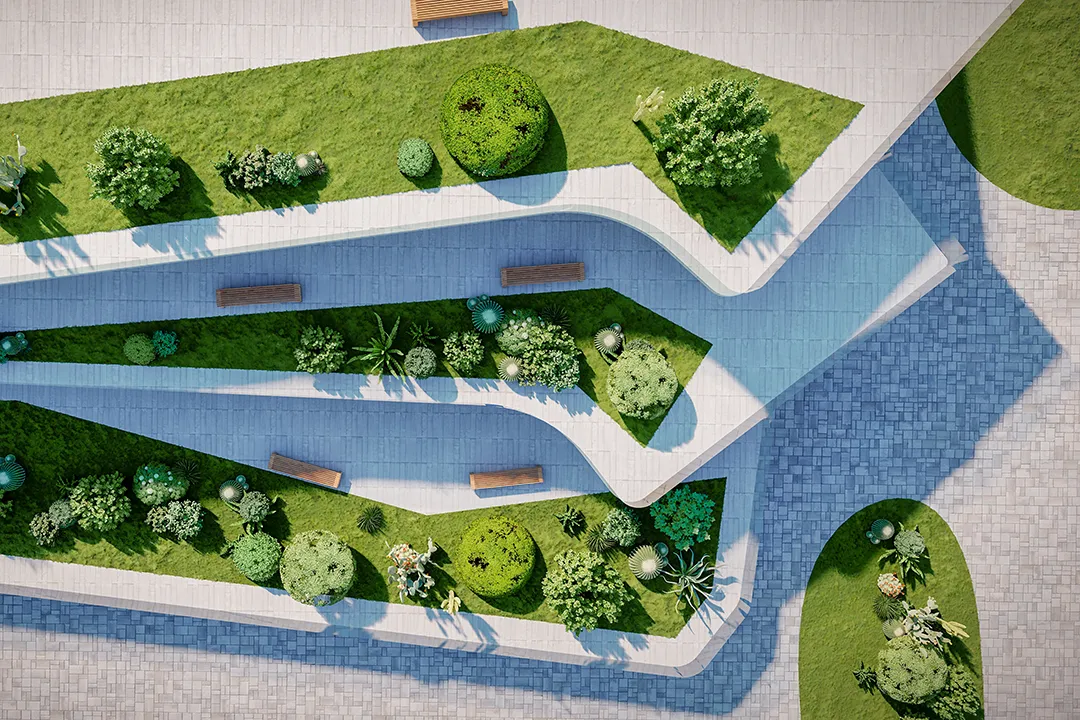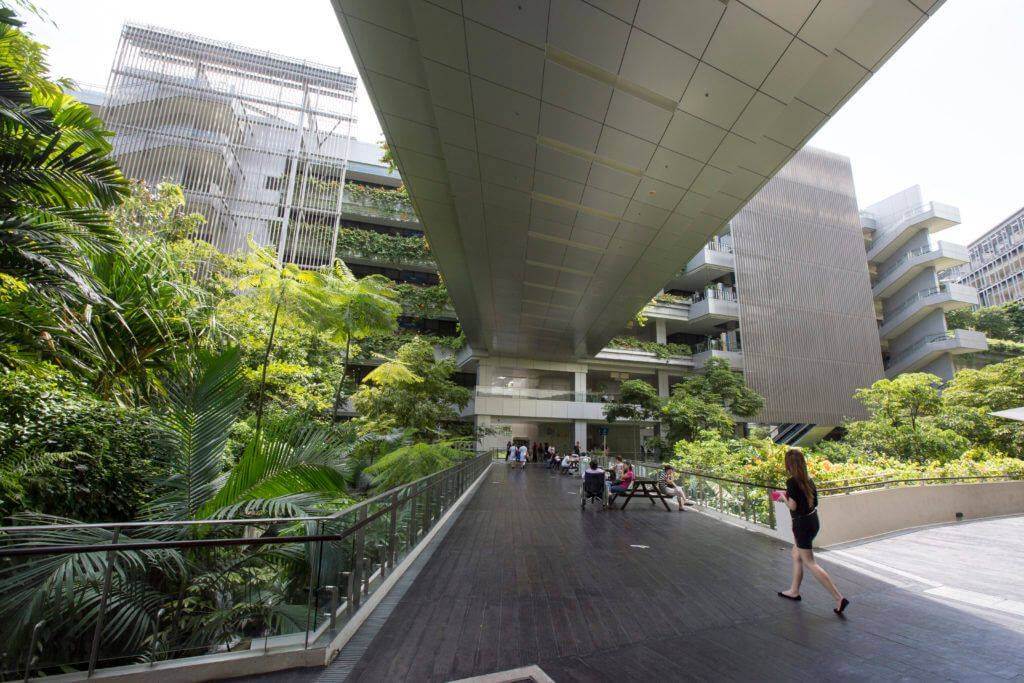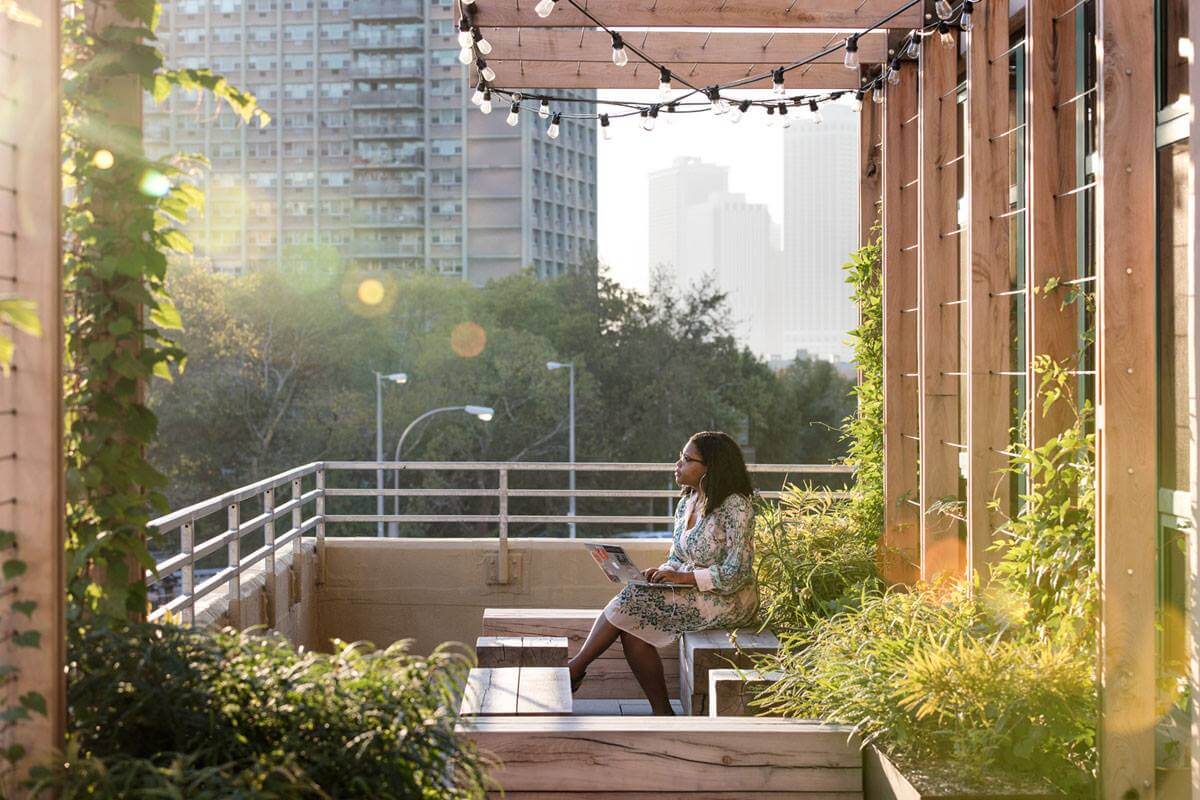
For centuries, architecture has reflected the way humans interact with their environment. Early civilizations built homes near water and green spaces, recognizing the benefits of living in harmony with nature. Today, as urbanization expands, many built environments lack this essential connection. This is where biophilic architecture comes in—an innovative approach that seamlessly integrates nature into the spaces where we live and work.
At Plant Solutions, we specialize in transforming interiors through biophilic interior design, incorporating living walls, moss installations, and plant-based solutions to create healthier, more vibrant environments.
What is biophilic architecture?
Biophilic architecture is the practice of designing buildings and interiors to enhance the human-nature connection. By incorporating natural elements, organic materials, and sustainable design principles, architects and designers create spaces that foster well-being, productivity, and environmental harmony.
This architectural approach isn’t just about aesthetics—it’s backed by research. Studies, such as this one, show that integrating biophilia interior design elements like natural light, greenery, and water features can:
- Reduce stress and anxiety – Natural environments lower cortisol levels, a key stress hormone, and promote relaxation. A study published in the Journal of Environmental Psychology found that patients with views of nature reported lower stress levels and recovered more quickly than those without natural views (Ulrich, 1984).
- Boost cognitive function – A 2008 study highlights that exposure to natural elements enhances focus, memory retention, and creative problem-solving skills. This is why many companies now integrate biophilic interior design into workspaces to improve employee performance (PMC2264925).
- Improve air quality – Living walls and indoor plants naturally filter toxins, increasing oxygen levels and reducing airborne pollutants. NASA’s Clean Air Study confirmed that plants such as peace lilies and snake plants help remove toxins like benzene and formaldehyde.
- Enhance workplace productivity – A Harvard study found that employees working in green-certified offices experienced a 26% boost in cognitive function and reported higher job satisfaction compared to those in conventional office spaces.
From corporate offices and healthcare facilities to hotels and retail spaces, biophilic architecture is redefining how we experience built environments. By leveraging natural design principles, we can create spaces that enhance both mental and physical health.
Why research supports biophilic architecture
The connection between biophilia and well-being has been extensively studied in neuroscience, psychology, and environmental science. Research published in the National Institutes of Health (NIH) journal found that individuals exposed to natural environments exhibit:
- Lower heart rates and blood pressure compared to those in urban settings.
- Higher cognitive performance in tasks requiring focus and problem-solving.
- Improved emotional well-being, with reduced symptoms of depression and anxiety.
Architects and designers increasingly implement biophilic strategies based on this research, recognizing that built environments profoundly impact human health.
Read more on biophilic design’s impact on well-being.
Seamlessly integrating biophilic elements
At Plant Solutions, we specialize in biophilic interior design strategies that bring the science of well-being into real-world architectural applications. Whether it’s custom plant walls, moss installations, or sustainable design solutions, we help clients create spaces that are both functional and restorative.
contact Plant Solutions today and bring nature into your built environment.Get Started with Plant Solutions

The evolution of nature-inspired architecture
The concept of integrating nature into architecture isn’t new. In the 19th century, wealthy factory owners developed parks for workers, recognizing the benefits of green spaces on well-being. Over time, this evolved into biophilic interior design, where nature is intentionally woven into buildings, workplaces, and homes.
Today, businesses, architects, and developers prioritize biophilic architecture as a sustainable and economically sound investment. Studies show that environments with natural elements lead to improved mental health, reduced absenteeism, and higher productivity—a win-win for both individuals and organizations.
At Plant Solutions, we partner with architects and designers to create custom biophilic interiors that align with both functionality and aesthetics. Whether it’s a living plant wall in an office, a moss feature in a hotel lobby, or an indoor garden in a healthcare facility, our solutions bring life to any space.
Bringing biophilic architecture to life
True biophilic architecture extends beyond simple greenery. It involves designing spaces that engage the senses and mimic nature’s patterns. Some key elements include:
- Living walls and vertical gardens – A space-saving way to introduce greenery into interiors.
- Maximizing natural light – Strategic placement of windows and skylights to mimic outdoor environments.
- Water features – The sound and movement of water enhance relaxation and focus.
- Organic textures and materials – Wood, stone, and natural fibers evoke the feel of the outdoors.
At Plant Solutions, we understand the science behind biophilic interiors and specialize in integrating plant-based design solutions into any space. Whether you’re working on a large-scale architectural project or simply want to enhance an existing environment, we offer customized solutions to help you bring biophilic architecture to life.

Transform Your Space with Plant Solutions
As leaders in biophilic interior design, we collaborate with architects, designers, and businesses to create nature-inspired environments that promote health, happiness, and sustainability. Our expertise in living walls, plant installations, and interior landscaping ensures that every space benefits from the power of nature.
Let’s bring your vision to life. Contact Plant Solutions today to get started.
